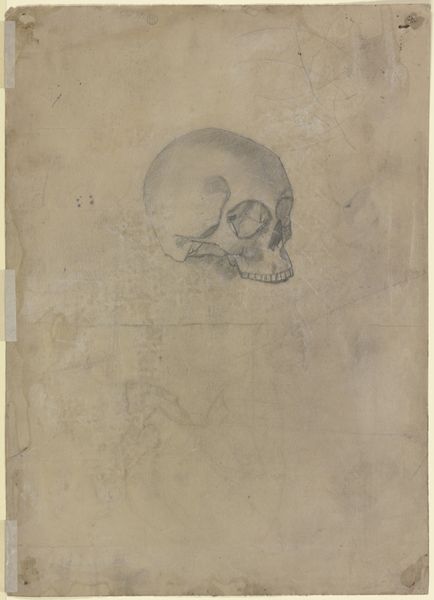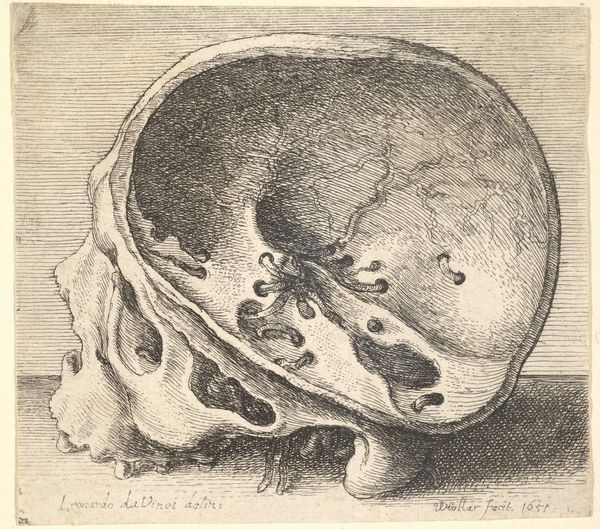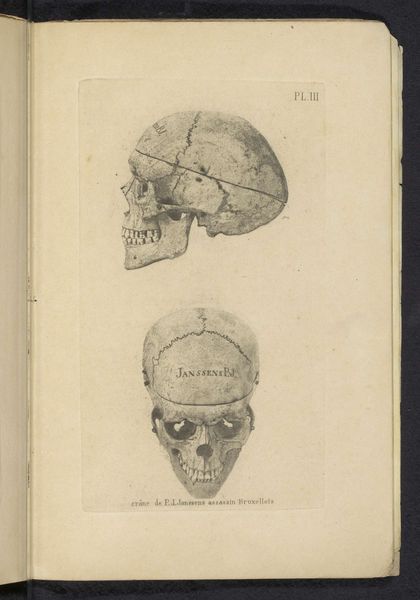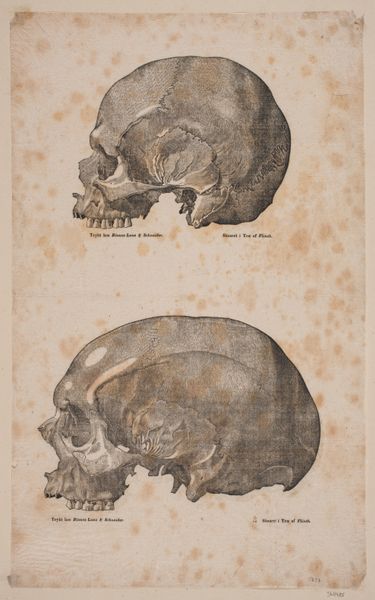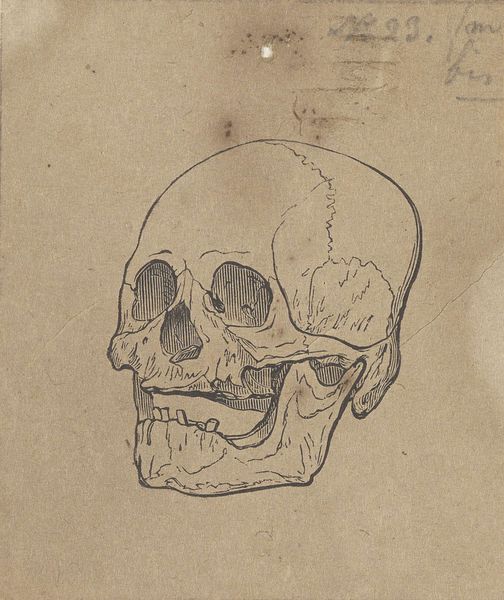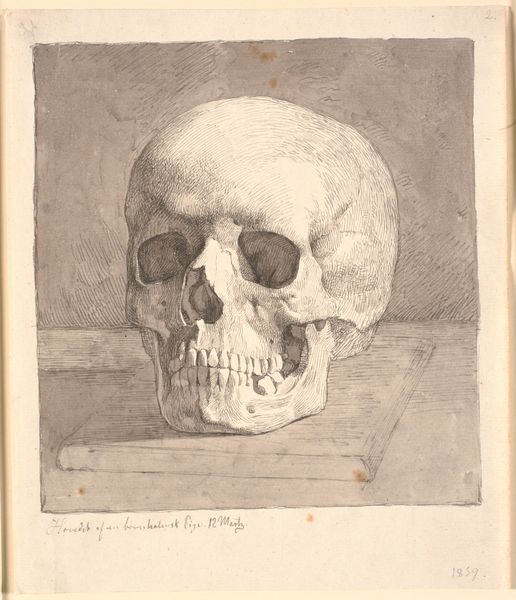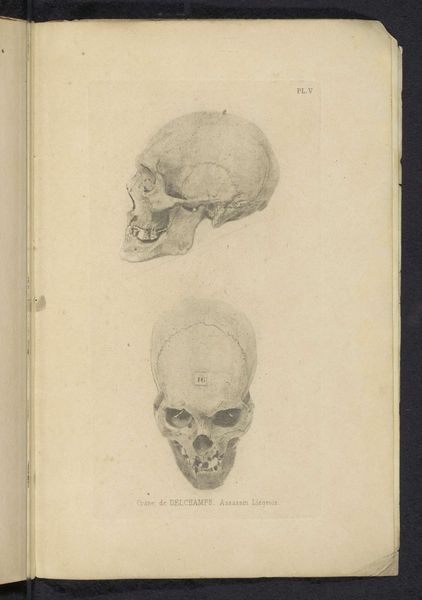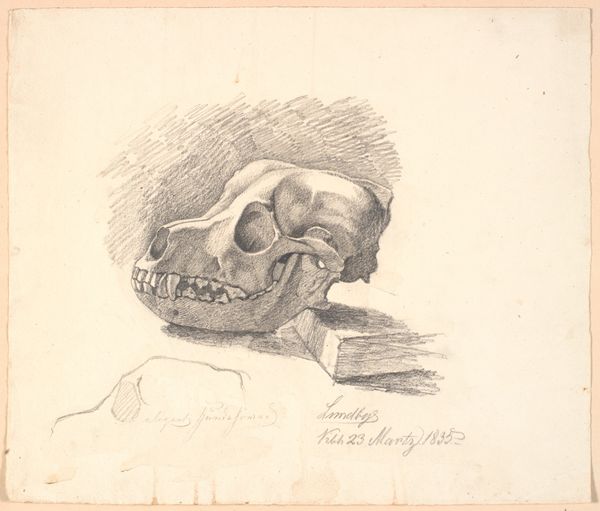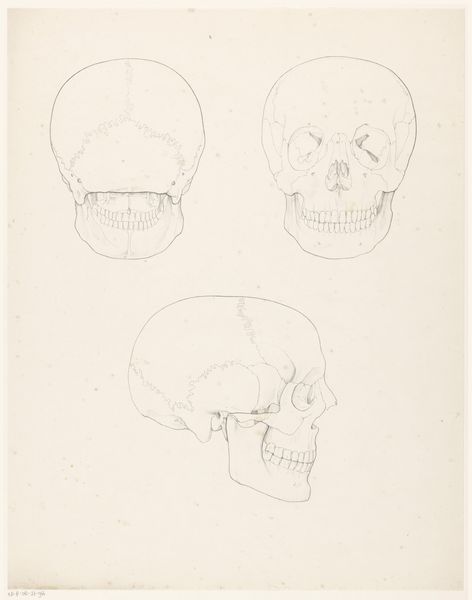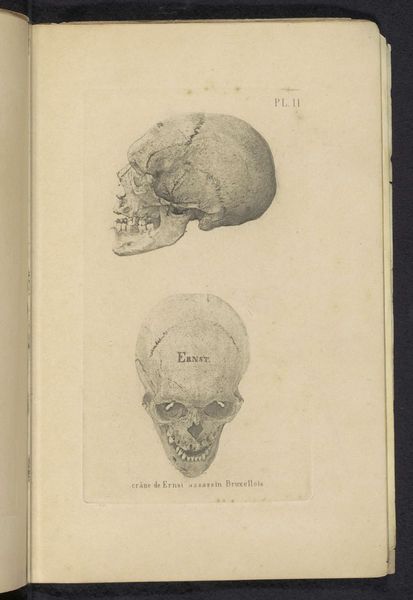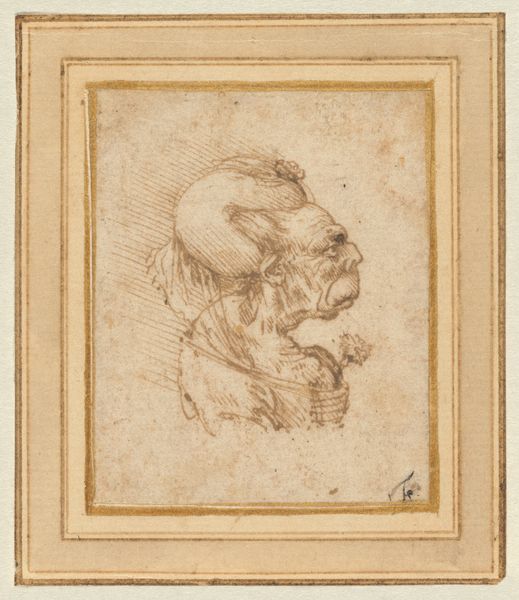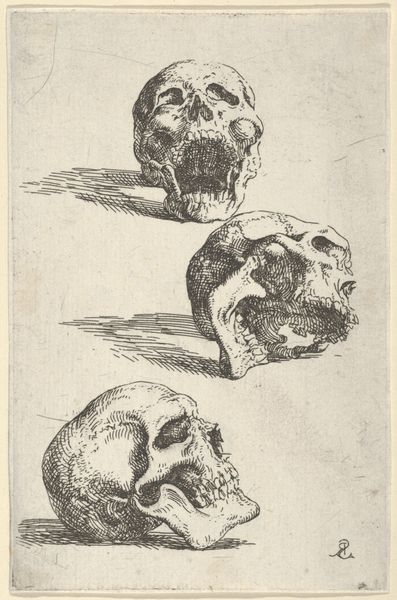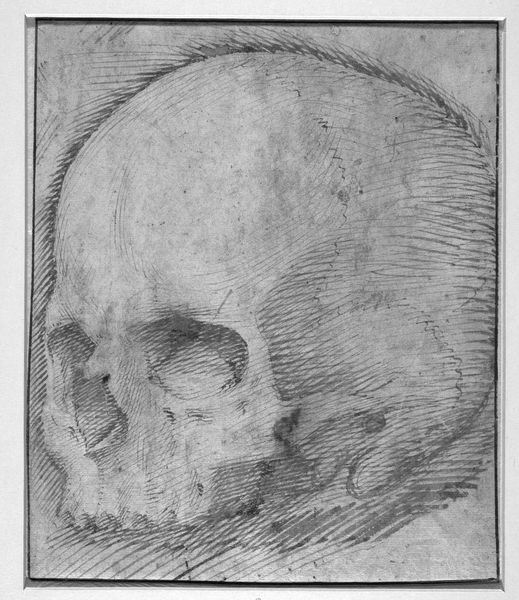
drawing
#
drawing
#
toned paper
#
pencil sketch
#
charcoal drawing
#
possibly oil pastel
#
charcoal art
#
oil painting
#
pencil drawing
#
underpainting
#
charcoal
#
watercolor
Dimensions: 3 7/8 x 2 11/16 in. (9.9 x 6.9 cm)
Copyright: Public Domain
Editor: This is Battista Franco's "Skull in Profile," created sometime between 1535 and 1541. It's a drawing on toned paper. The skeletal structure seems both fragile and incredibly detailed. What strikes me is the artist's linear technique. How do you interpret the artist's hand at work in this drawing? Curator: Observe the cross-hatching technique. Notice how the varying density of these lines model form and create subtle tonal variations across the surface. Franco masterfully uses line weight to define the contours and inner structure of the skull. The composition itself is worth noting; it fills the frame almost completely, demanding our attention. Editor: So, you’re saying that the success of the drawing lies in the composition and the line work? Curator: Precisely. The density of the lines gives form and volume and creates the illusion of three-dimensionality on a two-dimensional plane. Do you also note the implied shape—that arch? The overall structural arrangement serves to reinforce the subject matter. Editor: I hadn’t noticed the arch until you mentioned it. How interesting that the boundaries form their own frame. It highlights the contours. Curator: Exactly. Every formal element is working in concert, even the choice of toned paper, creating depth and a sense of volume without the use of color. Editor: I’ve certainly gained a deeper appreciation for Franco's skill in rendering the human form with simple linear techniques, particularly his control over the art elements that you pointed out to me. Curator: Indeed, studying its formal aspects allows us a window into the artist's technique and intention. We come away from it having observed structure as meaning.
Comments
No comments
Be the first to comment and join the conversation on the ultimate creative platform.

